THE ULTIMATE GUIDE TO COOKING DESSERTS THE INDIAN WAY Prasenjeet Kumar Sonali Kumar Copyright Prasenjeet Kumar & Sonali Kumar 2016 All rights reserved. No part of this book may be reproduced, stored in a retrieval system, or transmitted, in any form or by any means, electronic, mechanical, photocopying, recording or otherwise, without the prior permission of the copyright owner/s, except in the case of brief quotations embodied in critical articles or reviews. Photographs of dishes have been provided wherever possible. All photographs are taken by the authors, in natural light, without using any inedible garnish or props, and of the dishes that were made right in their home. These are just meant to illustrate how exactly the dish would look like if you prepared them yourself. Edited by: Arun Kumar Ph.D.
YOUR FREE BOOK IS WAITING As a way of saying thanks for your purchase, we are offering FREE (worth $2.99 on all major e-book retailers) our Amazon #1 best-seller How To Create A Complete Meal In A Jiffy. This is a LIMITED TIME OFFER.  Presenting a Cookbook like No Other Cookbook in the World. From the popular website www.cookinginajiffy.com and the author of a number of Amazon Bestseller cookbooks comes a cookbook that doesnt focus on recipes. Instead, it shares the secret of creating a Full Meal in around 30 minutes. To get a FREE copy of this 152-page best-selling cookbook, click here: https://authormarketing.booklaunch.io/prasenjeetkumar@hotmail.com/how-to-create-a-complete-meal-in-a-jiffy Disclaimers Although the Authors have made every effort to ensure that the information in this book was correct at the time of publication, the Authors do not assume and hereby disclaim any liability to any party for any loss, damage, or disruption caused by errors or omissions, whether such errors or omissions result from negligence, accident, or any other cause.
Presenting a Cookbook like No Other Cookbook in the World. From the popular website www.cookinginajiffy.com and the author of a number of Amazon Bestseller cookbooks comes a cookbook that doesnt focus on recipes. Instead, it shares the secret of creating a Full Meal in around 30 minutes. To get a FREE copy of this 152-page best-selling cookbook, click here: https://authormarketing.booklaunch.io/prasenjeetkumar@hotmail.com/how-to-create-a-complete-meal-in-a-jiffy Disclaimers Although the Authors have made every effort to ensure that the information in this book was correct at the time of publication, the Authors do not assume and hereby disclaim any liability to any party for any loss, damage, or disruption caused by errors or omissions, whether such errors or omissions result from negligence, accident, or any other cause.
This book is not intended as a substitute for the medical advice of physicians. The reader should regularly consult a physician in matters relating to his/her health and particularly with respect to any symptoms that may require diagnosis or medical attention. This book also assumes that the reader does not suffer from any food allergies or related medical conditions. Readers suffering from food allergies are requested to skip the recipes that contains ingredients which trigger adverse reactions in that reader or in his/her family and friends. The spellings used in this book are British, which may look strange to our American friends, but NOT to those living in Australia, Canada, India, Ireland and, of course, the United Kingdom. This means that color is written as colour and so on.
We hope that is NOT too confusing!
Table of Contents
Thats what dessert means to me: a dollop of sweet love in an otherwise cold world. Sarah Strohmeye
Chapter 1: Desserts Why Bother?

I mage Courtesy of Voraom/FreeDigitalPhotos.net I didnt know why dessert was invented or what function it was meant to perform. Raising livestock and the harvesting of grains are ancient activities, but when did humankind decide it also needed crme brulee? Bill Buford Great question. So lets start with a little history. There is no doubt that humankind from time immemorial has loved the sweet taste as it occurred naturally on Mother Earth. If anything, our instincts taught us to eschew anything that tasted bitter and trust everything that tasted sweet.
As we learnt to grill, bake and finally cook on pots and pans, some experimentation in mixing sweet stuff like honey or fruit juice with other food products would have naturally started. But preparing a dessert, as we know it today, had to wait till sugar could be extracted from sugarcane in India. Or from beetroot in Europe. So it was natural that Greek and Roman Symposia in 300 BC, as the classics describe, used to conclude with fresh or dried fruit and nuts ONLY. Even in 1430, when Joan of Arc was captured by the Burgundians, she is said to have just some fruit after dinner. In Victorian England, the final course was often a savoury, such as grilled sardines! But the Crachit family in Charles Dickens's A Christmas Carole , set in the late 1830s, is described as all excited about having "the Pudding" after dinner.
So it looks like sugar had reached England by that time. The French Experience Etymologically, the word "dessert" comes from the Old French word " desservir ," which meant strangely "cleaning the table." The word gained popularity in the 17th century Europe where entertaining used to be an all-evening/all-night affair. The lavish spread laid out on long dining tables used to be taken as the measure of ones social standing. And if there was one extreme stigma attached to this activity, it was to let food run short or to let anyone leave hungry. But there was a practical problem: servants and employees had to be relieved at some point. So kitchens came up with some sweet, and prepared in advance finishers.
The easiest was honey-drenched ice that could be prepared hours in advance. Other desserts, that didn't need to be heated, and which could be prepared even the day before, soon came to be invented. All these innovations made it possible to let the cooks and servers get home quicker. But more importantly, these helped the host look good for serving everyone to the point of complete satiation. So what desserts did was to fill guests up to the brim and helped " desservir ," or "clean the table." As the nobility also discovered, sugar, and anything sweet in general, was an appetite depressant. This meant that no one who had a dessert after a lavish meal could ever complain of being hungry.
There is also a theory that way back, before refrigeration was discovered, meats had to be heavily spiced to mask their deterioration that could border on rancidity. The sweets following the main course helped cover any such taste of the main course rather well. Susan Pinkard in her book A Revolution in Taste : The Rise of French Cuisine explains how the tables of nobles contained dishes of many flavours (savoury, bitter, salt and sweet)often with conflicting spices as some kind of show of wealth. There were many gradual developments in the art and science of food preparation that included the separation of flavours, complimentary textures and a sweet at the very end of the meal like the epilogue of a great book. These were often accompanied by a bitter, strong cup of coffee or tea or even cheese. Sugar, especially cane sugar, imported as it was from distant India was an extreme luxury.
Only the very rich could afford it. And so they served dessert in small amounts at the end of the meal. Having an expensive sweetened dish served at the end of the meal thus ensured it would be remembered the most. The Health Debate So much for the history. Now for, aah, the eternal question. Why should anyone in todays age and time in his right senses indulge in any calorie dense sweets, sweetmeats, desserts, mithais or anything that such sugary or syrupy dishes are known by anywhere in the world? The question arises because, as the health freaks around you will tell you, all these desserts rather unnecessarily overload your system with empty calories and cause a sugar spike in your blood that is best avoided.
But what if you are a connoisseur of desserts, who doesnt need an occasion to celebrate? Or, if you like to feed your soul with food that makes you feel as if heaven has descended on earth? Could you then tell those health freaks to take a hike and NOT feel guilty about indulging your sweet tooth for no apparent reason? Could you let logic take a back seat and just savour your just desserts? Oh, yes now you very well can. Apparently some latest research indicates that all such sweet stuff may (in moderation, of course) be good for your health. They in fact have some really positive effects on your health, heart, mind, and sleep. Shocking? So read on. Believe it or not: Sweets lessen the chances of getting a stroke Lovers of dark chocolate will love this little piece of research. In a study from Neurology, 37,000 Swedish men aged 45 to 79 recorded their diet over the course of 10 years.

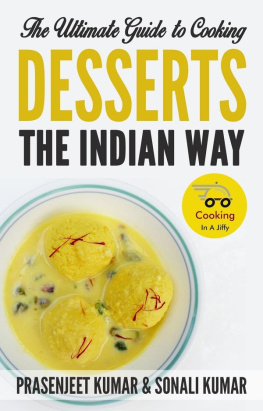



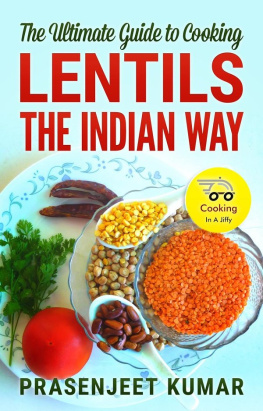
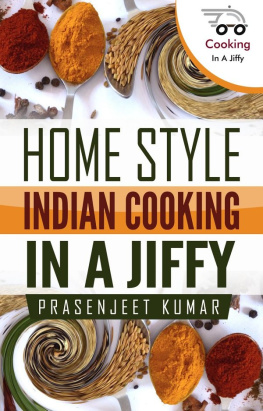



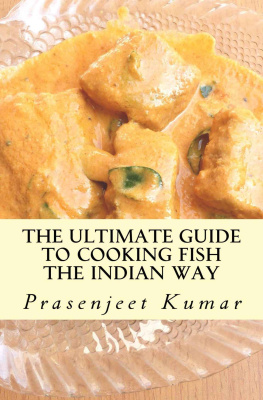
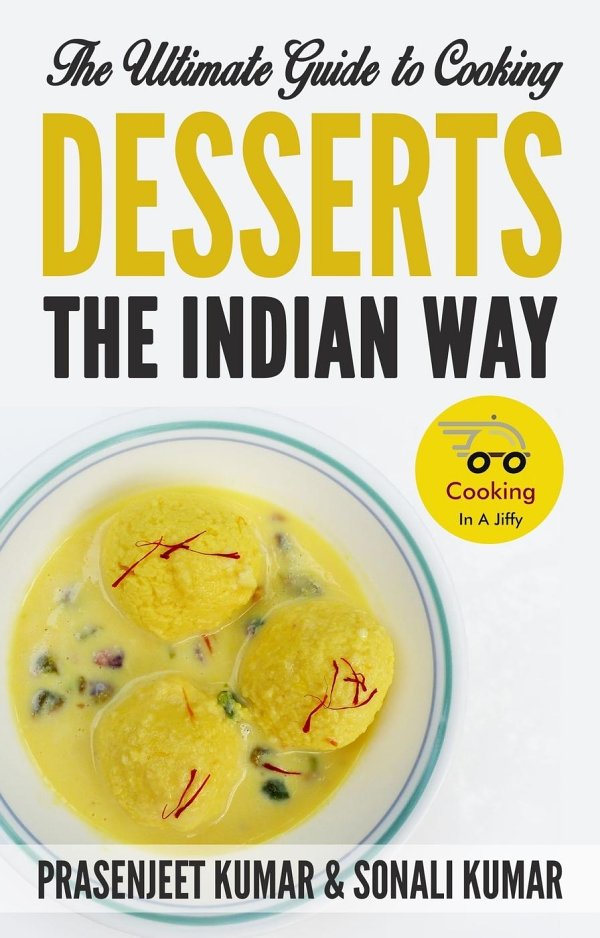
 Presenting a Cookbook like No Other Cookbook in the World. From the popular website www.cookinginajiffy.com and the author of a number of Amazon Bestseller cookbooks comes a cookbook that doesnt focus on recipes. Instead, it shares the secret of creating a Full Meal in around 30 minutes. To get a FREE copy of this 152-page best-selling cookbook, click here: https://authormarketing.booklaunch.io/prasenjeetkumar@hotmail.com/how-to-create-a-complete-meal-in-a-jiffy Disclaimers Although the Authors have made every effort to ensure that the information in this book was correct at the time of publication, the Authors do not assume and hereby disclaim any liability to any party for any loss, damage, or disruption caused by errors or omissions, whether such errors or omissions result from negligence, accident, or any other cause.
Presenting a Cookbook like No Other Cookbook in the World. From the popular website www.cookinginajiffy.com and the author of a number of Amazon Bestseller cookbooks comes a cookbook that doesnt focus on recipes. Instead, it shares the secret of creating a Full Meal in around 30 minutes. To get a FREE copy of this 152-page best-selling cookbook, click here: https://authormarketing.booklaunch.io/prasenjeetkumar@hotmail.com/how-to-create-a-complete-meal-in-a-jiffy Disclaimers Although the Authors have made every effort to ensure that the information in this book was correct at the time of publication, the Authors do not assume and hereby disclaim any liability to any party for any loss, damage, or disruption caused by errors or omissions, whether such errors or omissions result from negligence, accident, or any other cause. I mage Courtesy of Voraom/FreeDigitalPhotos.net I didnt know why dessert was invented or what function it was meant to perform. Raising livestock and the harvesting of grains are ancient activities, but when did humankind decide it also needed crme brulee? Bill Buford Great question. So lets start with a little history. There is no doubt that humankind from time immemorial has loved the sweet taste as it occurred naturally on Mother Earth. If anything, our instincts taught us to eschew anything that tasted bitter and trust everything that tasted sweet.
I mage Courtesy of Voraom/FreeDigitalPhotos.net I didnt know why dessert was invented or what function it was meant to perform. Raising livestock and the harvesting of grains are ancient activities, but when did humankind decide it also needed crme brulee? Bill Buford Great question. So lets start with a little history. There is no doubt that humankind from time immemorial has loved the sweet taste as it occurred naturally on Mother Earth. If anything, our instincts taught us to eschew anything that tasted bitter and trust everything that tasted sweet.